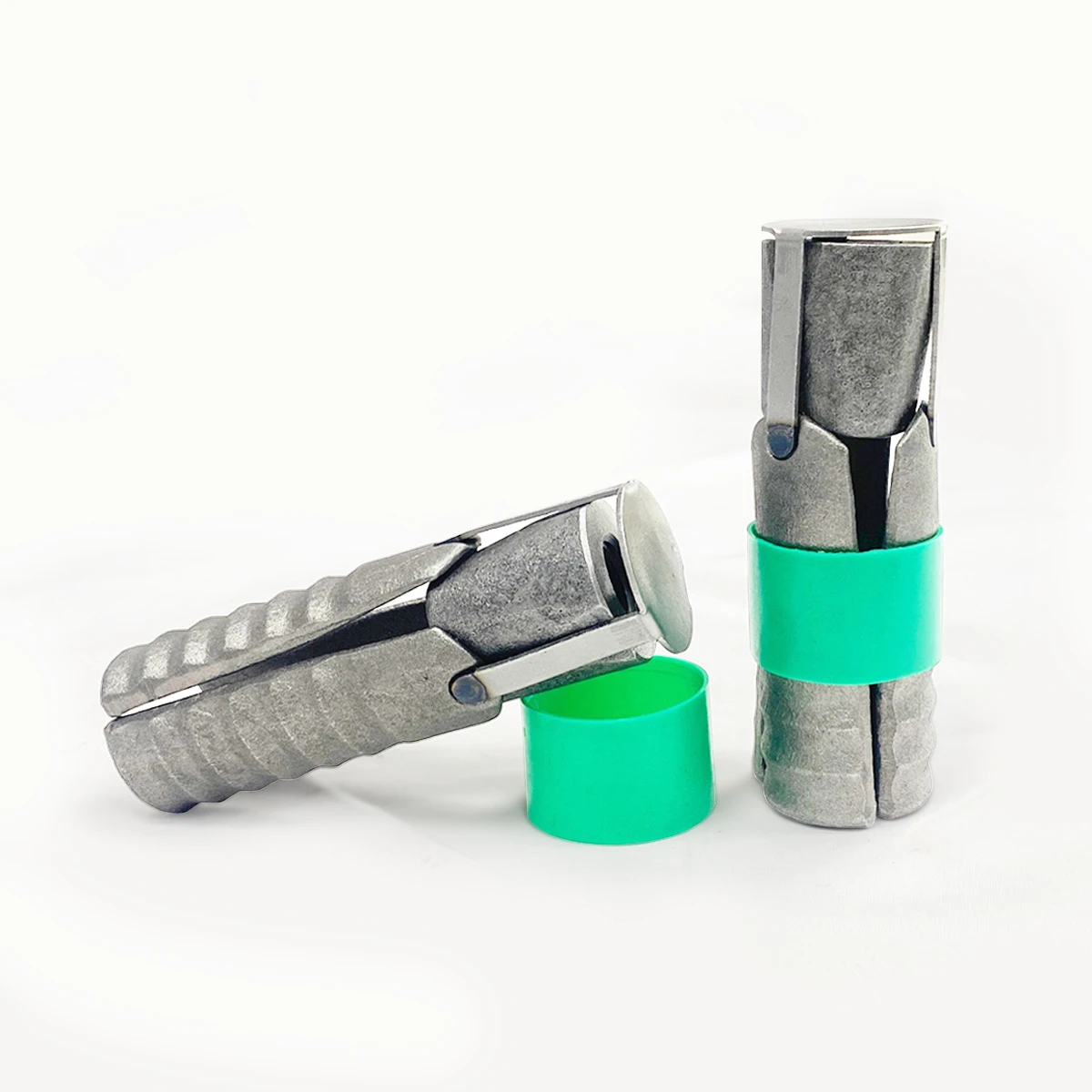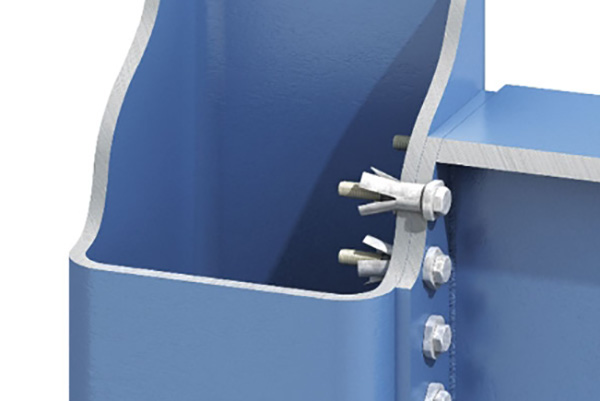This article dives deep into the world of Hollo-Bolts, a revolutionary type of expansion bolt specifically designed for connecting to structural steel and hollow sections. We'll explore their advantages, applications, installation methods, and why they are becoming the go-to choice for engineers and contractors alike. Whether you are a seasoned professional like Mark Davis or new to the field, this guide provides valuable insights into using Hollo-Bolts effectively and safely, explaining why this article is a worthwhile read for anyone involved in construction, mining, or tunneling projects.
1. What are Hollo-Bolts and Why are They Used?
Hollo-Bolts, also known as blind bolts, are a specialized type of expansion bolt designed for making connections to structural steel, particularly hollow sections (HSS) or situations where access is only available from one side. The unique mechanism of a Hollo-Bolt allows it to be installed and tightened without needing access to the back of the structural member. This is achieved through an expanding sleeve that grips the inside of the hollow section when the bolt is tightened. The Jiufu factory, with its 7 production lines, specializes in producing these high-quality fasteners, essential for many construction and engineering projects.
These bolts are incredibly useful in situations where traditional methods, like welding or through-bolting, are impractical or impossible. Imagine trying to connect a beam to a closed steel hollow column – a Hollo-Bolt makes this a straightforward task. They are widely use in construction to structural connections in steelwork. They are also often used for connections that involve Hollow Structural Sections (HSS).
2. How Do Hollo-Bolts Differ from Traditional Fasteners like Through-Bolts?
Traditional through-bolts require access to both sides of the structural members being joined. This is fine for open sections, but completely unfeasible for hollow sections or when one side is inaccessible (e.g., against a wall). Through-bolting is also often more time-consuming, requiring precise hole alignment and access for tightening with a torque wrench on both sides.
Hollo-Bolts, on the other hand, are specifically designed for blind connections. The expansion mechanism allows them to grip the inside of the hollow section, creating a secure connection from just one side. This drastically simplifies installation, reduces labor costs, and opens up design possibilities that were previously impossible. Consider the complexity of aligning holes for through-bolts in large steel sections – Hollo-Bolts eliminate this challenge.
3. What are the Key Advantages of Using Hollo-Bolts in Structural Steel Connections?
The advantages of Hollo-Bolts are numerous, making them a preferred choice for many engineers and contractors like Mark Davis:
- Blind Installation: As mentioned, the ability to install from one side is a game-changer. This is especially crucial when working with HSS or in confined spaces.
- Speed and Efficiency: Installation is significantly faster than welding or through-bolting, saving time and reducing project costs.
- Reduced Labor Costs: Less time spent on installation translates directly to lower labor costs.
- High Load Capacity: Hollo-Bolts are available in a variety of lengths and sizes to handle significant loads, both in tension and shear.
- Aesthetic Appeal: The installed Hollo-Bolt presents a clean, finished appearance, unlike the often-bulky appearance of through-bolts and nuts.
- No Welding Required: Which also means, no need for skilled welders.
- Versatility: Suitable for a wide range of applications, from connecting structural steel beams to attaching cladding and secondary steelwork.
- Corrosion Protection: Many Hollo-Bolts are galvanized or available with added corrosion protection, ensuring long-term durability.
4. Step-by-Step Installation Guide for Hollo-Bolts.
Installing Hollo-Bolts is a relatively straightforward process, but it's crucial to follow the correct procedure to ensure a secure and reliable connection:
- Drill the Hole: Drill a hole through the structural member to the specified hole diameter for the chosen Hollo-Bolt size. Jiufu provides detailed specifications for each bolt type.
- Insert the Bolt: Insert the Hollo-Bolt into the hole until the collar is flush with the surface of the steel.
- Tighten the Bolt: Using a calibrated torque wrench, tighten the bolt to the manufacturer's recommended torque value. This causes the sleeve to expand and grip the inside of the hollow section, creating a high clamping force.
- Inspect the Connection: Visually inspect the installed bolt to ensure it is properly seated and tightened.

5. What Sizes and Materials are Hollo-Bolts Available In?
Hollo-Bolts are available in a wide range of materials and sizes to suit various applications and load requirements. Common materials include:
- Carbon Steel: Offering excellent strength and affordability.
- Stainless Steel: Providing superior corrosion resistance, ideal for harsh environments.
Common sizes range from smaller diameter bolts(like M16) for lighter applications to larger sizes for heavy-duty structural connections. Jiufu, as a leading manufacturer, offers a comprehensive product range, including various head styles and thread types. Always consult the manufacturer's specifications to determine the appropriate size and material for your specific project.
6. How to Ensure the Correct Hollo-Bolt Size and Load Capacity for Your Project?
Choosing the right Hollo-Bolt size and ensuring it can handle the anticipated load is critical for the safety and integrity of the structural connection. Here's a step-by-step approach:
- Determine the Load: A qualified engineer should calculate the loads (both tension and shear) that the connection will be subjected to.
- Consult Load Tables: Manufacturers like Jiufu provide detailed load tables that specify the allowable loads for each Hollo-Bolt size and material.
- Consider Safety Factors: Always apply appropriate safety factors to the calculated loads to account for uncertainties and variations.
- Choose the Appropriate Bolt: Select a Hollo-Bolt with a load capacity that exceeds the factored load requirements.
- Verify Hole Diameter: Ensure that the drilled hole diameter matches the manufacturer's specifications for the chosen bolt size. An oversized hole can significantly reduce the bolt's holding capacity.
- The length of the stud is also crucial.
7. Applications of Hollo-Bolts: Where are they Commonly Used?
Hollo-Bolts are incredibly versatile and find applications in a wide range of industries and projects, including:
- Structural Steel Framing: Connecting beams, columns, and other structural elements in buildings and bridges.
- Hollow Section Connections: Joining HSS members in various structures.
- Curtain Wall Systems: Attaching curtain wall panels to the building's structural frame.
- Cladding and Facades: Securing cladding panels and architectural features.
- Secondary Steelwork: Connecting secondary steel elements, such as handrails, platforms, and supports.
- Stadium Construction: For example Unistrut Buffalo Supports.
- Mining and Tunneling: Used in conjunction with self-drilling anchor tools and rock drilling bits for ground support and reinforcement.

8. Hollo-Bolts vs. Welding: Which Connection Method is Superior?
Both Hollo-Bolts and welding are common methods for connecting structural steel, but they have distinct advantages and disadvantages:
| Feature | Hollo-Bolts | Welding |
|---|---|---|
| Speed | Faster installation | Slower, time-consuming process |
| Skill | Requires less specialized skill | Requires skilled and certified welders |
| Access | Only requires access from one side | Typically requires access from both sides |
| Inspection | Easy visual inspection | Requires specialized inspection techniques |
| Cost | Generally lower overall cost | Can be more expensive due to labor and equipment |
| Safety | Safer, no hot work or fumes | Potential fire hazards and exposure to fumes |
| Environment | Better, particularly for enclosed spaces | Less, especially for outdoor locations |
In many cases, Hollo-Bolts offer a faster, safer, and more cost-effective alternative to welding, especially when working with hollow sections or when access is limited. However, welding may still be preferred for certain applications requiring extremely high strength or specific joint configurations. The decision ultimately depends on the specific project requirements and the engineer's judgment.
9. Addressing Common Concerns: Safety, Quality, and Certifications.
As with any structural component, safety and quality are paramount when using Hollo-Bolts. Reputable manufacturers like Jiufu adhere to strict quality control procedures and obtain relevant certifications to ensure their products meet industry standards.
- Quality Inspection: Jiufu implements rigorous quality inspection processes throughout the manufacturing process, from raw material selection to final product testing.
- Certifications: Look for Hollo-Bolts that comply with relevant international standards, such as ISO certifications. This provides assurance of the product's quality and performance.
- Proper Installation: Following the manufacturer's installation instructions is crucial for ensuring the safety and integrity of the connection.
Addressing the pain points of customers like Mark Davis, Jiufu focuses on:
- Efficient Communication: Providing clear and prompt communication with customers.
- Reliable Logistics: Ensuring timely shipment and delivery to avoid project delays.
- Transparent Certification: Providing genuine and verifiable certifications.
10. The Future of Structural Connections: The Rise of Expansion Bolts like Hollo-Bolts.
Expansion bolts, particularly Hollo-Bolts, are increasingly becoming the preferred choice for structural steel connections due to their numerous advantages. As construction techniques evolve and the demand for faster, more efficient, and safer building methods grows, the use of Hollo-Bolts is expected to continue to rise. Innovations in materials and designs will further enhance their performance and versatility, making them an even more integral part of the construction industry. They are perfectly suited for use in hollow sections, for example. They offer a practical solution for situations where accessibility is restrict to one direction, providing a convenient alternative to traditional through-bolting.
Key Takeaways:
- Hollo-Bolts are a specialized type of expansion bolt designed for connecting to structural steel, particularly hollow sections.
- They offer significant advantages over traditional methods like welding and through-bolting, including blind installation, speed, efficiency, and reduced costs.
- Proper installation, including drilling the correct hole diameter and tightening to the specified torque, is crucial for ensuring a secure connection.
- Hollo-Bolts are available in a variety of sizes and materials to suit different applications and load requirements.
- Reputable manufacturers like Jiufu adhere to strict quality control procedures and obtain relevant certifications.
- Hollo-Bolts are playing an increasingly important role in modern construction, offering a faster, safer, and more efficient alternative to traditional connection methods.
- Jiufu offers various products besides Hollo-Bolts. Among others,shank adapters.
Post time: 3 月-17-2025














